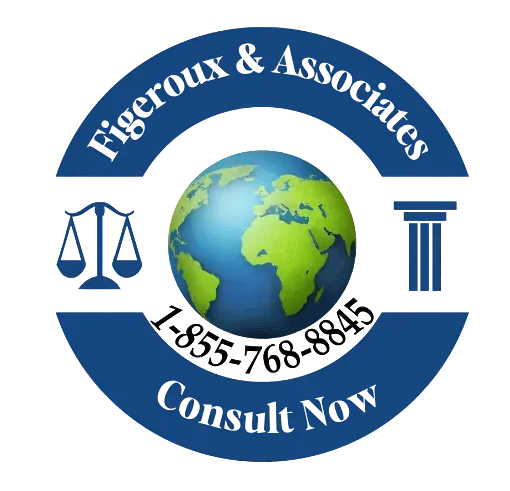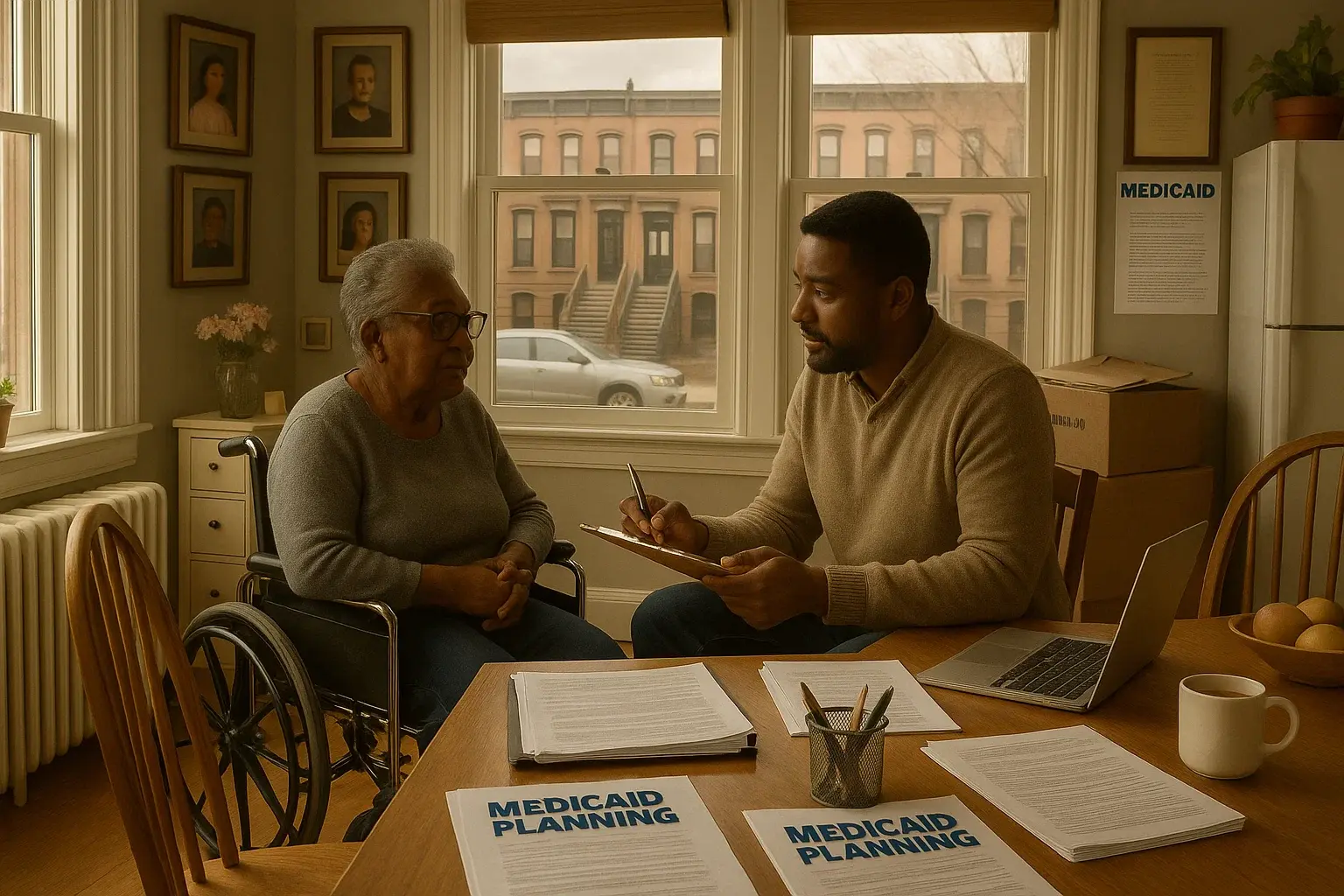Photo Copyright IQ INC.
For families in Brooklyn and across New York, the prospect of an ill spouse requiring out-of-home care can be daunting, both emotionally and financially. Long-term care costs are astronomical, often depleting a lifetime of savings within a short period. Fortunately, Medicaid, a joint federal and state program, can provide crucial financial assistance for these services. However, navigating the complexities of Medicaid eligibility, particularly for married couples, requires careful planning and a deep understanding of the rules.
At Figeroux and Associates, located at 26 Court Street, Suite 701, Brooklyn, New York, 11242, with website www.askthelawyer.us, and phone number 855-768-8845, we understand these challenges and are dedicated to helping families develop effective Medicaid planning strategies. This article, updated as of January 2025, outlines the step-by-step process of planning for your ill spouse’s out-of-home care with the judicious use of Medicaid.
Understanding the Medicaid Landscape: Income vs. Resources
The fundamental distinction in Medicaid eligibility lies between income and resources (assets).
- Income refers to regular payments received by an individual, such as Social Security benefits, pensions, interest, and dividends. For 2025, the Medicaid monthly income limit for an individual in New York is $1,800, and for a married couple, it is $2,433. For institutional care (nursing home), the applicant’s income, less a small personal needs allowance ($50/month in 2025), is generally expected to go towards their care costs.
- Resources are anything an individual owns that can be converted to cash, such as bank accounts, stocks, bonds, real estate (other than the primary residence, with certain limitations), and certain life insurance policies. As of 2025, the Medicaid resource limit for an individual is $32,396, and for a married couple, it is $43,781.
The challenge arises when a couple has income or resources exceeding these limits. This is where strategic planning becomes essential.
Step 1: Initial Assessment and Gathering Information
The first crucial step is to gain a clear picture of your current financial situation. This involves:
- Identifying all sources of income: List every source of income for both spouses, including Social Security, pensions (e.g., a monthly pension from a former employer, military retirement benefits), annuities, rental income from a property, interest from savings accounts, and dividends from investments.
- Cataloging all resources: Make a comprehensive list of all assets. Examples include:
- Bank Accounts: Checking accounts, savings accounts, money market accounts.
- Investments: Stocks, bonds, mutual funds, certificates of deposit (CDs), brokerage accounts.
- Retirement Accounts: IRAs, 401(k)s (though these may be treated differently if in payout status, as discussed later).
- Real Estate: Any properties owned other than the primary residence (e.g., a vacation home, a rental property).
- Vehicles: Cars, trucks, motorcycles.
- Life Insurance: Policies with a cash surrender value.
- Other Valuables: Collectibles, significant jewelry, or other items that could be sold for cash.
- Determining the “Institutionalized Spouse” and “Community Spouse”: When one spouse requires out-of-home care, they are considered the “institutionalized spouse,” and the spouse remaining at home is the “community spouse.” This distinction is critical for applying spousal impoverishment rules.
- Assessing the Need for Care: Obtain medical documentation confirming the need for out-of-home care, whether it’s nursing home care or home and community-based services (e.g., through a Managed Long Term Care (MLTC) plan).
Step 2: Understanding Exempt Resources
Not all resources are counted towards Medicaid eligibility. These are known as exempt resources, and understanding them is vital for preserving assets. As of January 2025, common exempt resources in New York include:
- Primary Residence: Your home is generally exempt, provided the equity interest does not exceed $1,097,000. It also remains exempt if the community spouse, a minor child, or a disabled individual resides there. For example, if you own a home in Brooklyn valued at $800,000 with a $200,000 mortgage, your equity is $600,000, which is well within the exempt limit.
- One Vehicle: Typically, one vehicle of any value is exempt. So, if you own a car, it won’t be counted against your resource limits.
- Household Goods and Personal Effects: Furniture, clothing, appliances, and personal belongings are usually exempt. For instance, your living room set, your spouse’s clothing, and your wedding ring would not be counted.
- Burial Funds: Up to $1,500 per individual specifically designated for burial expenses, or a life insurance policy with a cash value up to $1,500. A pre-paid funeral agreement is also generally exempt.
- IRAs and 401(k)s in Payout Status: If these retirement accounts are in payout status (meaning regular distributions are being received), they are generally considered income rather than a countable resource.
Step 3: Navigating Spousal Impoverishment Rules: CSRA and MMMNA
The federal spousal impoverishment provisions are designed to prevent the community spouse from becoming impoverished when their partner requires long-term care covered by Medicaid. These provisions introduce two key concepts: the Community Spouse Resource Allowance (CSRA) and the Minimum Monthly Maintenance Needs Allowance (MMMNA).
- Community Spouse Resource Allowance (CSRA): This allows the community spouse to retain a portion of the couple’s combined countable resources. For 2025, the CSRA in New York allows the community spouse to keep an amount equal to the greater of $74,820 or one-half of the couple’s total countable resources at the time the institutionalized spouse began their continuous period of institutionalization, up to a maximum of $157,920.
- Example: If a couple has $200,000 in countable resources, and the institutionalized spouse enters a nursing home, the community spouse would be allowed to keep $100,000 (50% of $200,000), since this is less than the maximum CSRA of $157,920 and greater than the minimum of $74,820. The remaining $100,000 would need to be “spent down” to meet the institutionalized spouse’s resource limit.
- Example: If a couple has $100,000 in countable resources, the community spouse could keep $74,820 (the minimum CSRA), even though 50% would be $50,000.
- Minimum Monthly Maintenance Needs Allowance (MMMNA): This ensures the community spouse has a minimum monthly income to live on. As of 2025, the MMMNA in New York is $3,948. If the community spouse’s own monthly income falls below this amount, they can receive a portion of the institutionalized spouse’s income to bring their total income up to the MMMNA.
- Example: If the institutionalized spouse receives $2,000 in monthly pension payments, and the community spouse only has $1,000 in Social Security income, the community spouse can receive $2,948 from the institutionalized spouse’s pension ($3,948 MMMNA – $1,000 community spouse income). The remaining portion of the institutionalized spouse’s income (in this case, $0 after the transfer to the community spouse) would then be applied towards the nursing home bill, less the $50 personal needs allowance.
Step 4: Asset Protection Strategies (“Spend Down”)
If a couple’s countable resources exceed the limits (after accounting for the CSRA), they will need to “spend down” their excess assets before qualifying for Medicaid. This must be done carefully, as certain transfers of assets can trigger a look-back period and impose a penalty period of ineligibility.
For nursing home Medicaid, New York has a 60-month (5-year) look-back period for asset transfers. This means Medicaid will review all financial transactions for 60 months prior to the Medicaid application date. Any uncompensated transfers (e.g., gifts to children, selling assets for less than market value) during this period can result in a penalty period during which Medicaid will not pay for care. The penalty period is calculated by dividing the amount of the uncompensated transfer by the average monthly cost of nursing home care in the region.
For community-based Medicaid (home care), a 30-month look-back period is expected to be implemented in March 2025. This is a significant change, as previously there was no look-back period for home care.
Common “spend down” strategies, when executed correctly and with professional guidance, can include:
- Paying for Nursing Home Care Privately: Using excess assets to pay for care until the resources fall below the Medicaid limit.
- Home Modifications: Making necessary home improvements for accessibility or safety (e.g., installing a ramp, modifying a bathroom).
- Purchasing Exempt Assets: Buying a new car if the existing one is old, or investing in a pre-paid funeral plan.
- Paying Off Debts: Eliminating credit card debt, a mortgage, or other outstanding loans.
- Establishing an Irrevocable Medicaid Asset Protection Trust (MAPT): This is a sophisticated strategy where assets are transferred into an irrevocable trust. After the look-back period expires, these assets are protected from being counted by Medicaid. This strategy must be implemented well in advance of needing care.
- Purchasing a Medicaid-Compliant Annuity: Converting a lump sum of countable assets into a stream of income for the community spouse. This can turn a countable resource into an income stream for the community spouse, which can then be used to supplement their MMMNA.
Step 5: Applying for Medicaid
Once the financial planning and “spend down” (if necessary) are complete, the next step is to apply for Medicaid. In New York City, applications can be submitted online through ACCESS HRA, by mail, or in person at a Medicaid Community Office.
The application process requires extensive documentation, including:
- Proof of identity and residency.
- Social Security numbers for both spouses.
- Financial statements for all bank accounts, investments, and retirement accounts.
- Proof of all income sources.
- Deeds to any real estate.
- Life insurance policies.
- Medical records confirming the need for long-term care.
- Records of any asset transfers made within the look-back period.
Be prepared for a thorough review of your financial history.
Step 6: Addressing Potential Issues and Fair Hearings
Medicaid applications can be complex, and denials or adverse decisions are not uncommon. If your application is denied, or if you disagree with a Medicaid decision, you have the right to request a Fair Hearing.
A Fair Hearing is an administrative review process where an impartial hearing officer reviews your case and makes a decision. For 2025, the New York State Department of Health has implemented a fair hearing compliance plan to address backlogs, including a “pre-hearing disposition” (PHD) process for certain pending hearings. It’s crucial to understand your rights and the deadlines for requesting a hearing.
Figeroux and Associates can represent you throughout the Medicaid application process and during a Fair Hearing, advocating for your rights and ensuring all necessary steps are taken to secure the benefits your ill spouse needs.
Conclusion
Planning for out-of-home care for an ill spouse with Medicaid involves navigating a complex web of rules and regulations. Understanding the distinction between income and resources, the concept of exempt resources, and the critical provisions of the Community Spouse Resource Allowance (CSRA) and Minimum Monthly Maintenance Needs Allowance (MMMNA) is paramount. Strategic asset protection, always mindful of the Medicaid look-back period, is essential to preserve family assets while securing vital care.
At Figeroux and Associates, we are committed to providing the expert legal guidance necessary to navigate these challenges. Don’t face this complex process alone. Contact us today at 855-768-8845 or visit our website at www.askthelawyer.us to schedule a consultation. Our experienced team is ready to help you plan for your family’s future with confidence and peace of mind.
Click Here to Schedule a Consultation with Figeroux & Associates Today!



